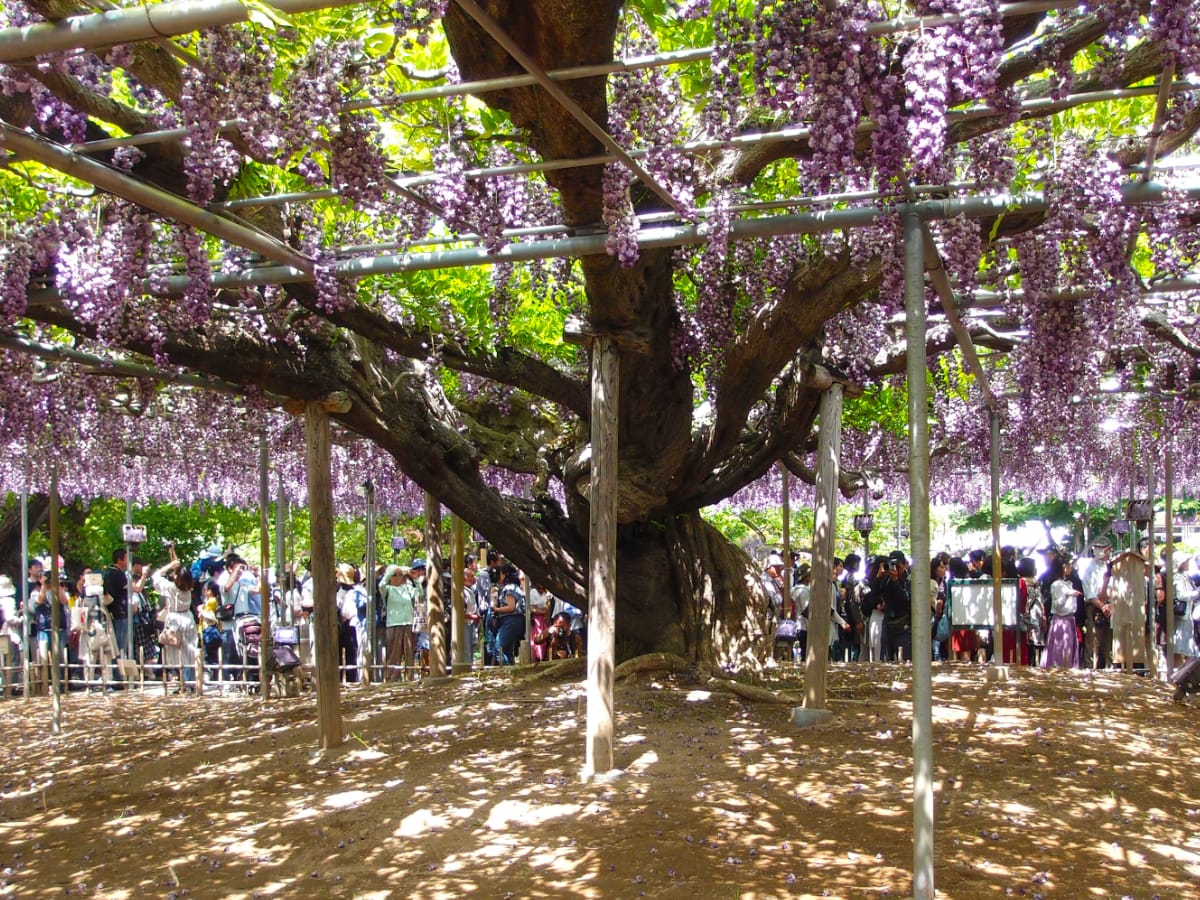
Source: T. Kiya | © Flickr.com
Flowers Removed From 600 Year Old Wisteria Tree In Order To Deter Visitors
- Tags:
- coronavirus / COVID-19 / Wisteria
Related Article
-

A silver-lining to lockdowns: suicides drop during stay-at-home orders
-

The Happy Science Religious Movement Claims to Hold the Cure for COVID-19
-

Classes held in hotel: Japanese university’s coronavirus measure questioned online
-

Japanese cheerleader bar carries on business with faceshield masks and gloves–for everyone
-

“Stay home” sake cup helps doctors on frontlines and promotes coronavirus awareness
-

“Kusunohana Flavored Spirits 75” made with rice and lemons can also be used as a sanitizer


A 600-year-old Wisteria tree that normally sees thousands of visitors each year during the blossom season, has had it’s flowering branches cut and removed in order to dissuade visitors during the coronavirus outbreak.
The tree in question is the Kurogi No Ofuji tree, which has stood on the grounds of Susanoo Shrine in Yame City, Fukuoka Prefecture for approximately 620 years.
Legend (and the Kuroki Tourism Agency) says that the tree was hand-planted by Prince Yoshinari, the seventh son of Emperor Go-Murakami ( also known as Emperor Murikami II) in 1395. Since it’s apparent planting, the tree has stood and survived a number of battles and great fires, and is now dedicated as a National Monument by the Japanese Government.
The tree is famed for its thousands of drooping flowers that adorn it’s twisted vine branches during each spring and has so many that the tree even has its own festival. The Yame Kurogi Wisteria Festival, which celebrates the beauty and aroma of its flowers, normally sees around 200,000 visitors, this year, however, the city chose to cancel the festival in order to conform to social distancing measures put in place by the current state of emergency due to new coronavirus.
Despite the cancelation of the event and the suggestions of social distancing by both local and national government, the shrine has seen more than 1,000 people each day over the most recent weekends, who have gathered at the grounds in order to view the blossoms. As the crowds at the shrine continued to grow, concerns were raised by local government over the possible spread of COVID-19, and after much consideration, a decision was made by the Kurogi Tourism Agency to remove the flowers.
On April 28th 2020, workers from the city clipped thousands of wisteria raceme from the vines – an unfortunate and depressing yet necessary outcome of the grasp that the coronavirus currently has on us all.
This will be the second time that nature has taken a blow from COVID-19, as just one week ago, the tulips at the Sakura Tulip Festival in Chiba were removed in order to deter visitors. 800,000 tulip heads were removed from the tulip fields after people ignored requests from the Sakura City and the local tourism agency not to visit the sea of colourful flowers.
A number of people have taken to Twitter to express their sadness and frustrations on the decision to remove the wisteria flowers:
As you can see, some people were concerned about whether the wisteria flower blossoms would bloom well in the future following such a dramatic pruning in the spring. To put an end to worry, wisteria trees can and should be pruned twice a year, once in late spring and again in the middle of summer, in order to promote healthy and strong growth. Although the harsh trimming that Kurogi No Ofuji has recently been subject to might mean that flowers won’t bloom as well next year, it is more than certain that the blossoms will be back in their thousands the following spring.